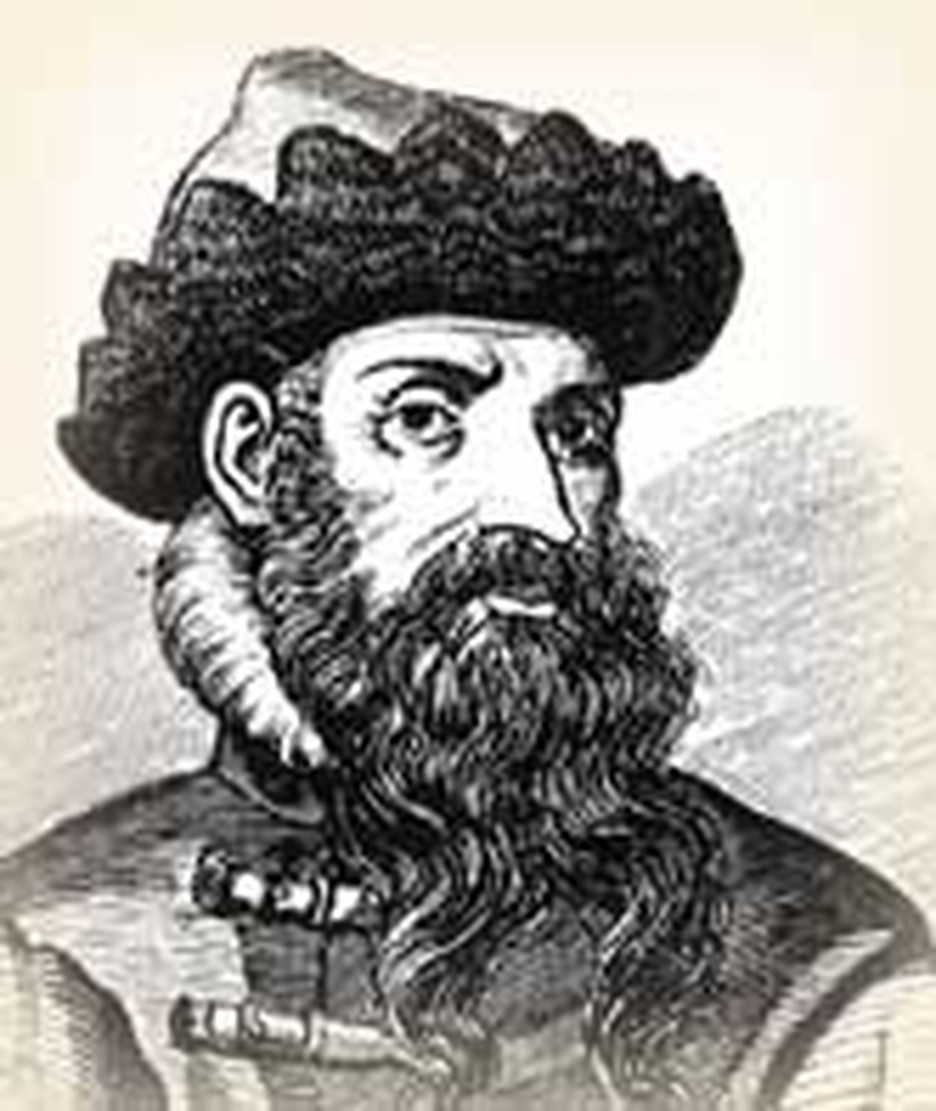
Johann Gutenberg is one of the most famous men who ever lived, but we know next to nothing about him. Although we can pinpoint the month and day of his death, we aren't sure of the year. All the same, if you like to read books, you owe a debt to this extraordinary inventor.
Gutenberg was the first person in history to actually print books from movable type. However, the idea may not have been his. A silversmith named Waldvogel taught "artificial writing" at Avignon as early as 1444, using steel alphabets and an iron-screw press. Waldvogel, however, does not seem to have overcome the obstacles which Gutenberg shrewdly mastered at great personal cost. This included developing an oil-based ink.
As a goldsmith, Gutenberg had the technical training to accomplish the project, and was able to fund his own early experiments. But eventually he needed capital and that proved his downfall. He had to take a partner-- Johann Fust of Mainz. Because of his excessive secretiveness, his partner sued him. It is one of the great ironies of history that Gutenberg was unable to profit from his invention of printing. His creditors foreclosed on him just when success was within his grasp. The man who more than anyone else brought about the print revolution, answered in court like any other debtor. Fust was awarded most of Gutenberg's equipment and the stock of Latin Bibles he had printed.
Today, Gutenberg's few surviving Bibles are worth millions of dollars. And yet, we don't know for sure when his first Bible was published. Some almanacs say it happened on this day, March 22, 1457. However, that date has difficulties, because copies already existed when Fust sued him in 1455.
Gutenberg's Bible was in Latin, the language of the church. Today we are used to elegant and "clean" typefaces. He printed his text in the thick and elaborate Gothic style familiar to readers of Medieval manuscripts. The Bible was in 3 volumes of 1,282 unnumbered pages.
After he lost his lawsuit, Gutenberg continued to print. However, he dreamed of making his books as beautiful as the illuminated manuscripts of the day and it just wasn't feasible at that time. Practical printers, who cared less about aesthetics, got more business than Gutenberg.
In his old age, Gutenberg was very poor. Archbishop Adolf of Nassau took pity on the old man and gave him an appointment at his court that at least fed and clothed him.
Bibliography:
- Asimov, Isaac. Asimov's Biographical Encyclopedia of Science and Technology; the lives and achievements of 1195 great scientists from ancient times to the present, chronologically arranged. Garden City, N.Y., Doubleday, 1972.
- Bouchot, Henri François Xavier Marie. The book: its printers, illustrators, and binders, from Gutenberg to the present time. Edited by H. Grevel. Containing one hundred and seventy-two facsimiles of early typography, book-illustrations, printer' marks, bindings, numerous borders, initials, head and tail pieces, and a frontpiece. London: H. Grevel & co., 1890.
- Feldman, Anthony. Scientists & Inventors. New York: Facts on File, 1979; p. 16.
- "Gutenberg, Johann." The Oxford Dictionary of the Christian Church. Edited by F. L. Cross and E. A. Livingstone. Oxford, 1997.
- "Johann Gutenberg." English Bible History. (www.greatsite.com/timeline-english-bible-history/gutenberg.html).
- Wallau, Heinrich Wilhelm. "Johann Gutenberg."
- Various encyclopedia and internet articles.
Last updated May, 2007.


